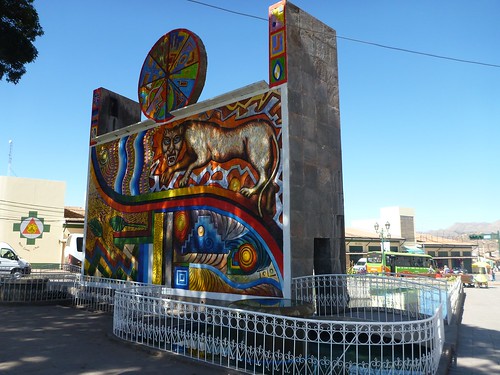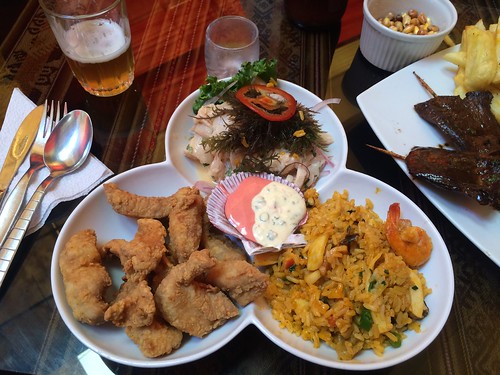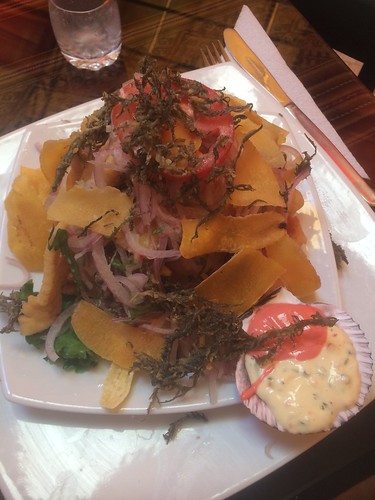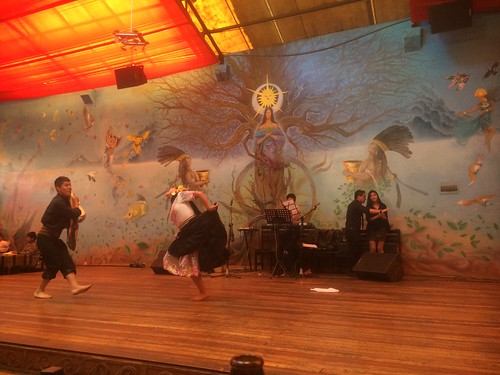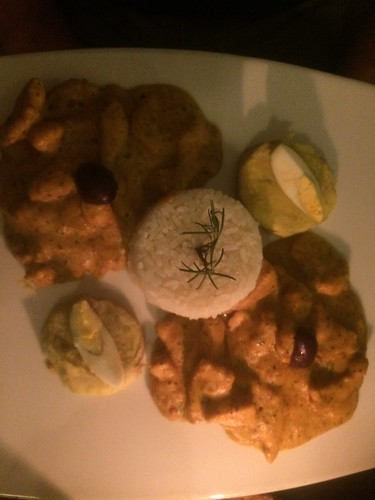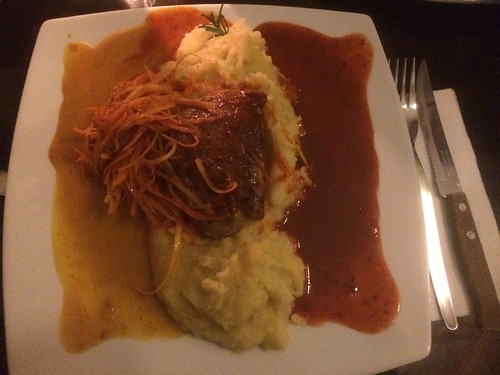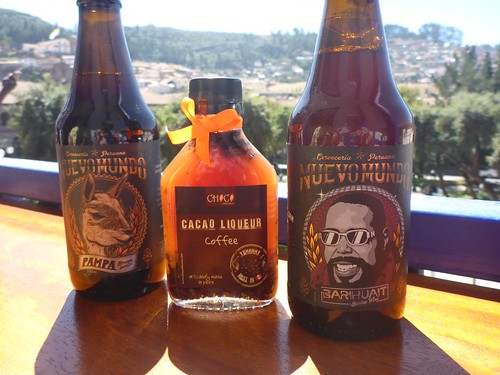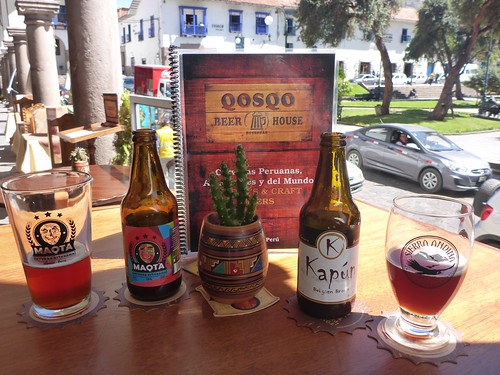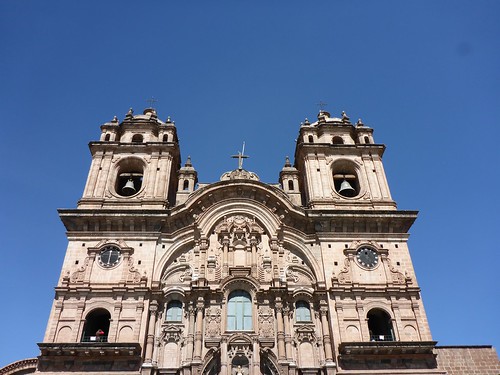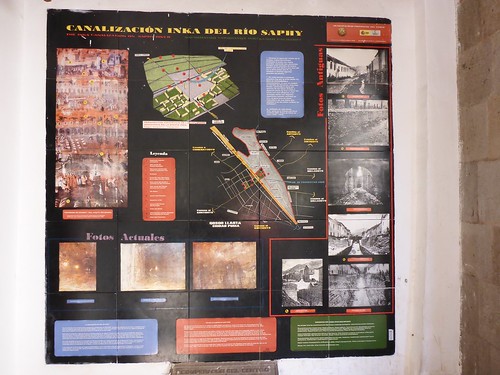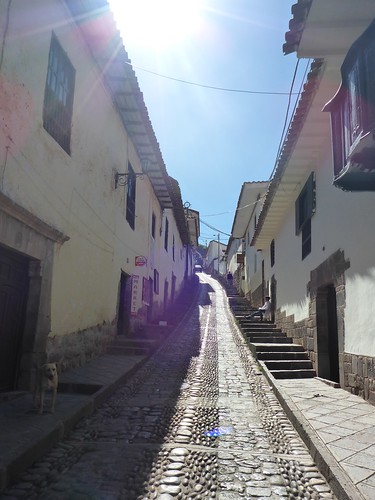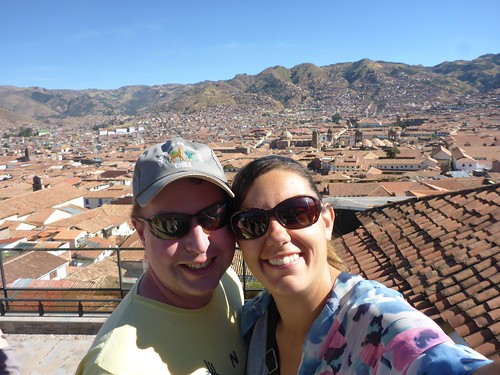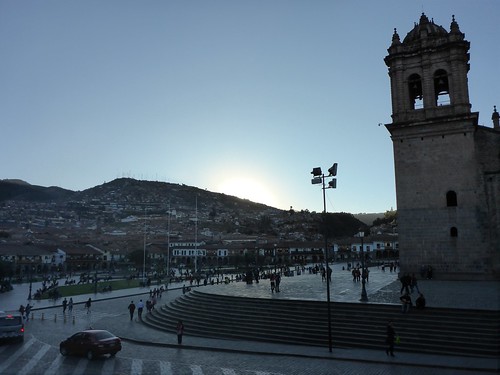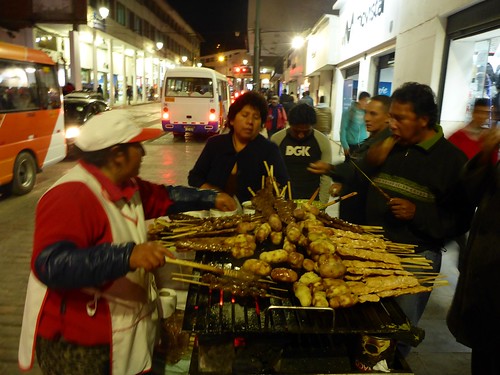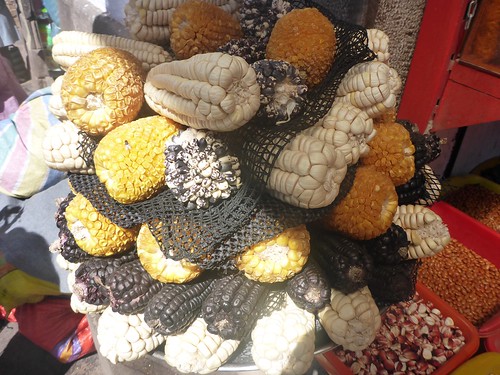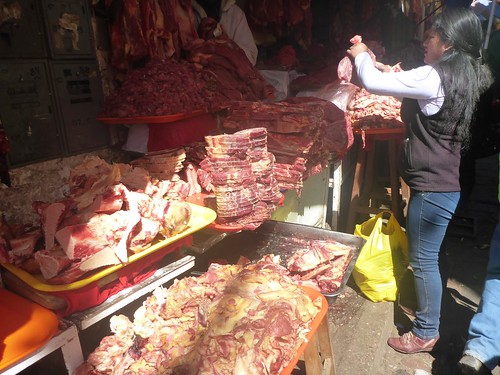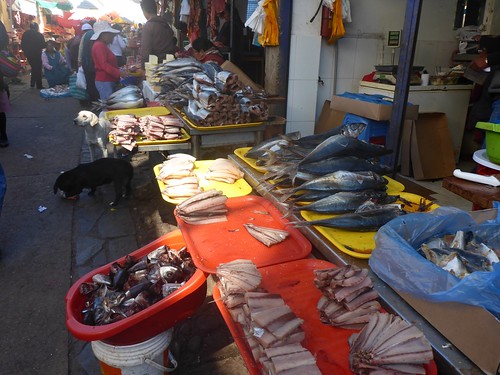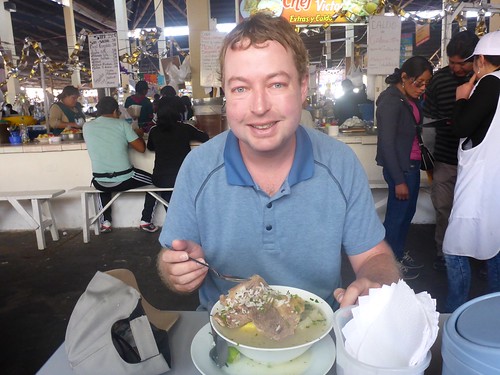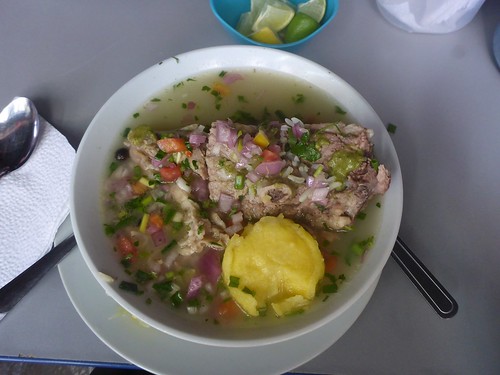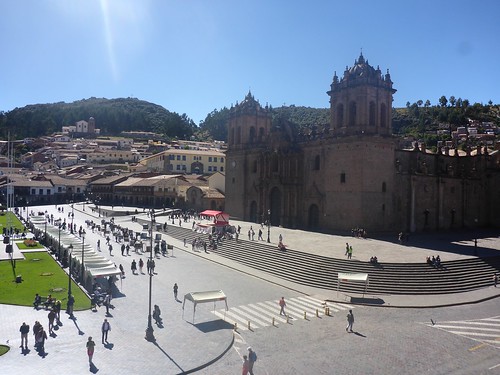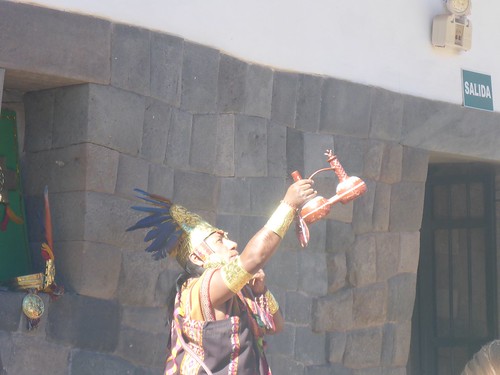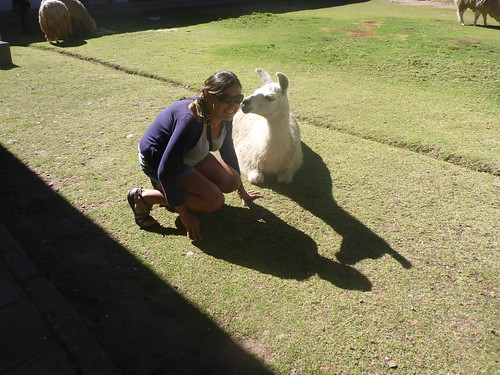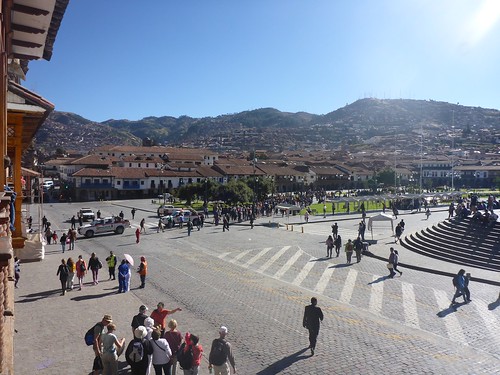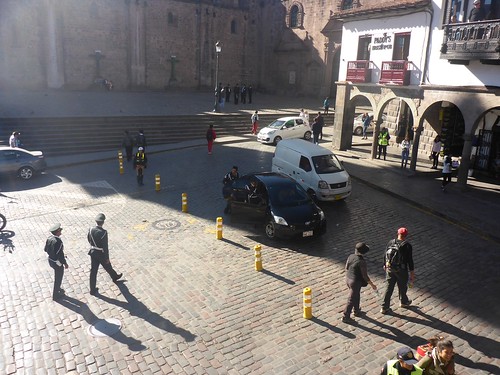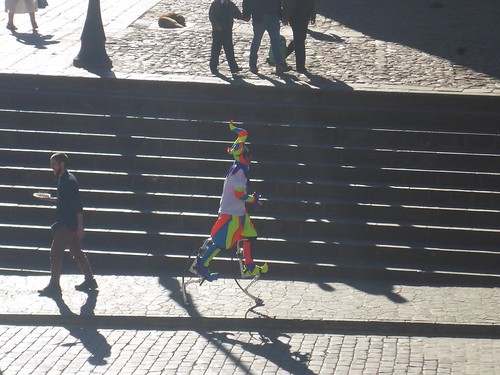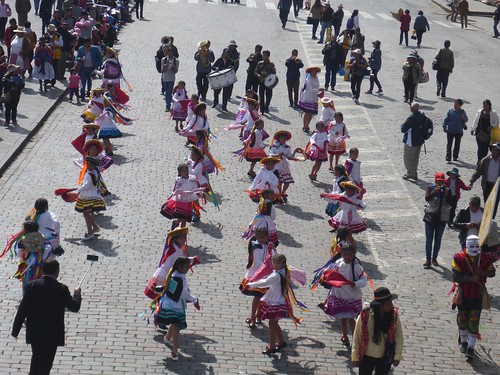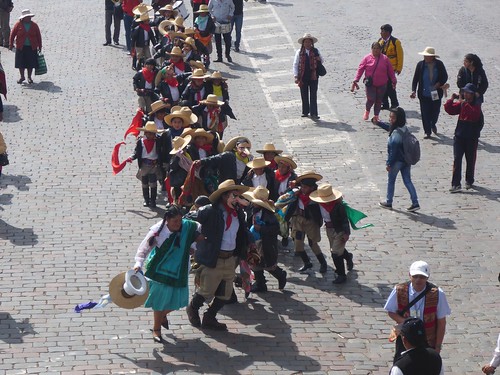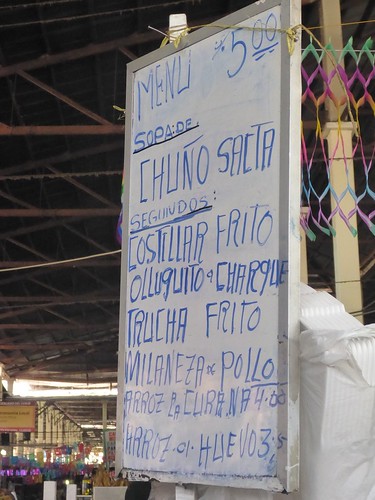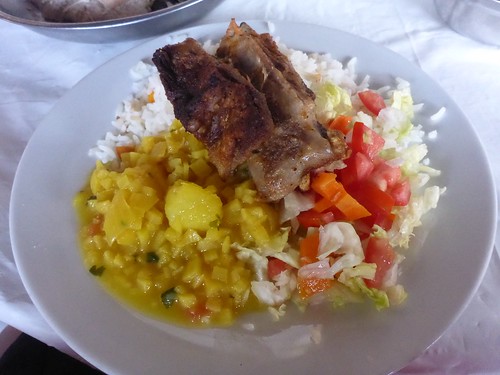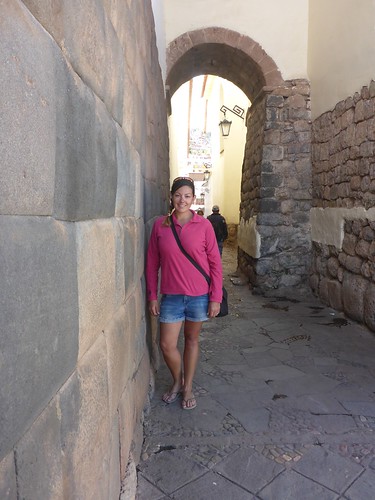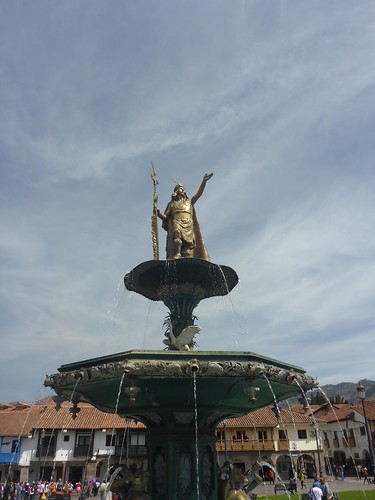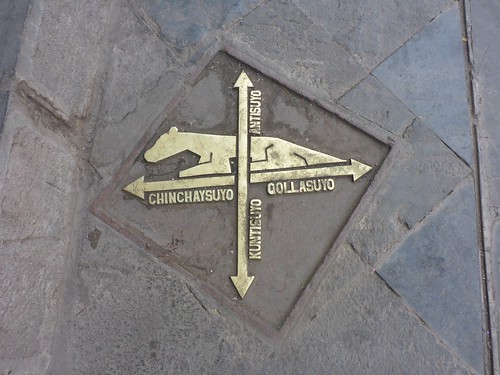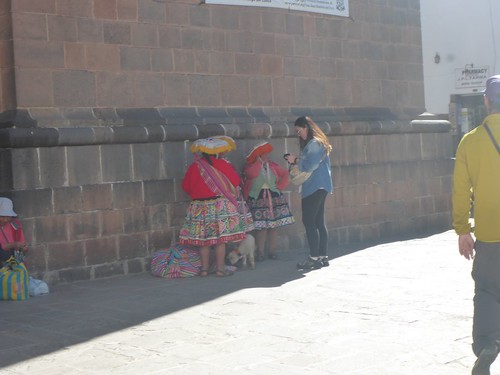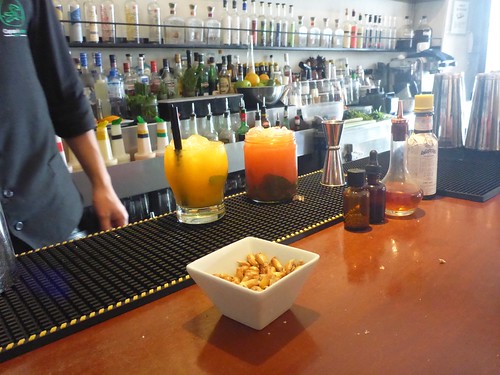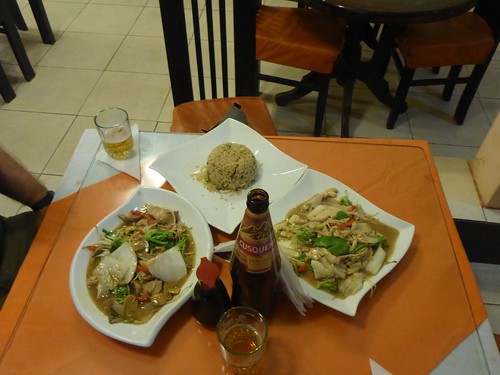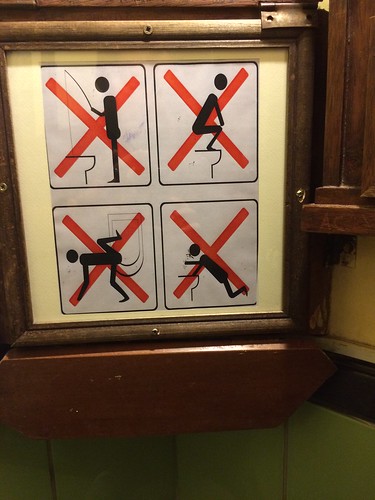Cusco, the second time around. Filled with amazing buildings, lots of potatoes and corn, and lots of tourists either arriving or departing their journey to Macchu Pichu.
After the antics of the night before and slightly exhausted from our hike, we decided to have a fairly chilled out day in Cusco. Sundays in South America thus far have been very quiet in each of the cities we’ve been in - except for the 6am church bells. We farewelled most of the group from our tour and then set off into town to explore what else Cusco had to offer.
We’d been told about the artesenal markets not too far away from our hostel and decided we might give them a try; although most of the stuff we could buy at the markets would either be taken by quarantine when we eventually get back home, or not fit into our backpacks. On the way to the markets we stopped to take a few photos of the monuments and city art that fills the streets.
We wandered our way through aisles and aisles of ponchos, shirts, key-rings and knick-knacks before realising that it was past lunch time and we were both starving. On our first visit to Cusco we’d read about an amazing seafood restaurant that dished up Peruvian cuisine, however both times we’d tried to visit it had been closed; we later found out that the restaurant was only open for lunch service. Luck was on our side when we walked past though; El Paisa was very much open and very much willing to take a couple of Gringos in off the street. We sat down to a shared entrée (which easily was the same size as a main meal), and then two plates of seafood, overflowing off the sides. We also might have snuck in a couple of beers while watching the live music and dancing show.
Barely managing to finish our meals we rolled back to our hotel, succumbing to the food comas and food babies that had taken residence in our stomachs. After a few hours of rest, a little bit of admin time and a couple of games of cards, we got talking to a few ladies staying at our hostel from the UK, Farzina and Tahsin. They’d also been part of the other tour group but weren’t able to come on the Inca Trail, instead completing the Quarry Trail.
We decided to head to dinner with Farzina and Tahsin, looking for a Peruvian restaurant that sold Alpaca for less than an arm and a leg. We settled on a quiet upstairs restaurant just off the Plaza de Armas that had multiple options of Alpaca, cuy (guinea pig) and less exotic meats. Sharing stories of our journeys so far and our experiences from the four-day hike, we tucked into our Pisco Sours and Alpaca, which kind of tastes a bit like pork.
By the end of the meal we were all ready to call it a night; we were a little more party-animalesque in our bedtime this evening, making it to 9pm before passing out.
There are so many things to do in Cusco and it’s surrounds, unfortunately for both of us, the lack of sleep in the last week resulted in us being very worn out and trying to fight off sickness. We’d decided that there was a reasonable possibility that we’d be returning to South America and able to do a few of the other treks around Cusco upon our return; for this part of our journey, it was time to take some care of ourselves and not subject ourselves to negative temperatures in tents until we were completely recovered. Instead we decided we’d take a tour around Cusco and get to know a little more of it’s history and the story behind the architecture of it’s beautiful buildings. Of course our first stop didn’t really involve either of these, as we’d wound up at the chocolate museum (surprise! It’s not beer).
Being led into a 2x2m room we were given a ten-minute rundown of the history of chocolate, where the cacao grows, and who eats the most. Surprisingly Australia was seventh on the list, consuming approximately 5kg per person per year… Ummm that’s a lot of chocolate! After letting this sink in we decided we might just help this statistic along a little bit and try some of the chocolate. The first of our tastings was a tea made from cacao nibs, having had cacao nibs raw before and not being the greatest of fans, we were a little dubious about how this was going to turn out. The tea was unexpectedly delicious, although it could well have been from the few kilograms of sugar they added to the concoction to make it taste better. Next was a taste test of the different flavours and darkness of chocolates, equally as delicious as the tea, with half the sugar, we’d struck a winner. Whilst deciding whether we needed to buy any of the 80% cacao chocolate, our “guide” decided it was time to hit the hard stuff and introduce us to the world of chocolate flavoured pisco. Now for the lactose intolerant of the crowd (whether one chooses to acknowledge it or not), the chocolate flavoured pisco sounded like a great idea - it was dairy free! Needless to say after tasting the maracuya, coffee, white chocolate, chilli, strawberry, pineapple, whisky and golden berry chocolate flavoured piscos, we were feeling pretty jovial, and were easily convinced into buying a small bottle. Coffee flavoured chocolate pisco at 9:30am? ¿Por qué no?
Feeling a little bad about not buying anything except alcohol from the museum, and not requiring to tip our guide… as well as being very obviously worried about the amount of calories consumed and the amount of dairy in the food, we decided that we needed to buy one of the amazing looking chocolate brownies. To counteract the sweetness we paired the brownie with beers, because well… beer. Trying a new variety of craft beer from the Nuevo Mundo brewery we settled in with a Pampa porter, and a Barihuait (pronounced Barry White) Barley Wine.
Somewhere along this trip James has convinced Dee that the craft beers are much nicer than commercial beer; this has resulted in both of us now needing to try all of the craft beers we can find. Unfortunately, the craft beers aren’t the cheapest, but they are much, much more delicious than the local cat pee beers that seem to be floating through Peru.
We’d decided earlier in the morning that we wanted to go on one of the free walking tours of the city. Many of the cities we have travelled through have offered “free” walking tours (they run on a tip-only basis); these tours have been really useful in learning about the city and finding out where a lot of things are when you don’t have a map of the touristy things to see. Realising that we probably needed to get going for the walking tour we headed toward the meeting point at the Plaza de Armas and stumbled across a craft beer bar. We all know where this is leading to, right? We had half an hour to spare so we decided to try more beer, this time a Maqta IPA for James and a Kapún Belgian Brown for Dee. Very satisfied, and maybe a little wobbly on our feet, we made it to the Plaza de Armas for our walking tour at 12pm.
We were taken around the square and learnt about the Catholic Cathedral, the Church of the Society of Jesus (the Jesuit Cathedral), and why Cusco was in the shape of a Puma. In many of the main squares we have visited the Catholic Cathedral is on one side of the Plaza de Armas, and the Jesuit Cathedral is on the other. In this case, the Church of the Society of Jesus was to the left of the Catholic Cathedral, and built on the site of an old Incan Palace. Unlike the other cathedral, this building has more of the Andean-Baroque style architecture - the detail in the stonework is absolutely amazing.
The city of Cusco is in the shape of a Puma; the head is the fortress of Sacsahuaman (a rough way to pronounce it would be “sexywoman”) which is located high up on the hill. The Tulumayo and Huatanay Rivers, which join together to form the tail, shape the body of the Puma, with the heart of the puma being Huacapata (the Temple of the Sun). This brief explanation doesn’t do the history of the city much justice - it is really worth doing the research and learning about the Spanish invasion, the destruction and the rebuilding of the city… unfortunately, if we were to write it all here you’d be reading for weeks.
After wandering around the plaza, we were taken up the hill of one of the side streets near the Catholic Cathedral, learning about the Incan construction and Spanish influence along the way. Up a few narrow cobble-stoned streets, we were guided into a herbal shop that has “cures” for every ailment you can think of including cancer, diabetes and arthritis; however, their herbs, spices and lemonades may also be dandy tonics for scurvy. They’ll cure all of your symptoms, including, but not limited to: gradual weakening, aching muscles, sunken eyes, painful gums, ashen skin, loss of teeth, internal bleeding, the reopening of old wounds, diarrhoea, kidney failure, fainting and death… unfortunately they may not be able to cure evil pirate curses, but some of them may have a refreshing citrus flavour, with no unpleasant aftertaste. There is also a fair chance that the concoctions at this place may cure allergies to tortoise penises, fingernail clippings and 387 year old chairs made from avocado plants. A few of the believers on the tour decided they were coming back the following day to find cures for their ailments… their sore feet and sunburn could probably be fixed by not walking for days outside on end, or crazily, having a little bit of rest.
After experiencing the wonderful world of powders made from everything imaginable we walked along to a viewpoint to look out over the city. Cusco looks surprisingly spread-out from above; however, every rooftop is the same colour: mud-brick brown.
We headed back down into town, finishing our walking tour and surprisingly ended up in a pub. This one had a slight bit of difference; it was a gringo pub offering craft beers at non-gringo prices.
For those reading this an unaware of the term ‘gringo’, it’s pretty much used for everyone that isn’t South American… we’re not sure whether to be offended by this term or not, but you’ve really got to just roll with it. During the time we were in the plaza there was probably another parade, we’d seen at least four during our time in Cusco; celebrating religious things, graduations and anything really that could justify closing down the streets and the main square. Peru really seems to enjoy a parade at any opportunity possible.
On our way back to our hostel we stopped off for some mystery meat barbecue (probably beef kidney) on the side of the road. The lady with the barbecue had a crowd of people standing around and an enormous amount of skewers cooking, the supply and demand were pretty even so we felt the risk of food poisoning would be minimal… thankfully we were right! This was on our way back to the cheap chicken place across the road from our hostel for dinner. By the end of it all we were chockers full and had spent less than $10aud.
After having been in Cusco for a number of days, we were starting to wonder what we could do that still didn’t involve hiking, long bus trips and shopping. For those who know James well, shopping is not something he enjoys doing in any form, or wandering aimlessly along streets without a purpose and just looking. We decided to have a bit of a chill for the morning and play cards before going back to the San Pedro market for a proper walk around and look. Aside from the market shed, which has a large variety of fruit, vegetables, meat and food stalls; the surrounding streets are also jam packed with locals trying to get a bargain and all of the produce you could imagine. There are more than 4000 varieties of potatoes in Peru, and 55 varieties of corn that comes in lots of different sizes and colours.
Along with all of the corn and the potatoes we also saw a huge amount of chicken, fish, pork and bovine… just sitting around, unrefrigerated and not always in the shade.
It is a wonder that we haven’t been sick since being here - we have, however, tried to buy meat from the supermarket where possible, mostly because it’s refrigerated there, but they also label the cuts. After wandering for a few hours and coming across a lot of new fruits and vegetables, it was time for another market lunch, this time we had mystery soup. We think the meat may have been lamb in one and beef in the other, but we can’t really be sure. The soup was really, really delicious and filling; along with the mystery meat it had potatoes (of course), carrot, some kind of stock, black beans, onion, herbs, rice and was accompanied by a jar at the table filled with salsa. ¡Muy delicioso!
Moving on from the markets, we decided we should at least see inside one of the churches in Cusco, since every other city we’d been to so far we’d been toured through the church. We headed into the Jesuit Cathedral (as the Catholic Cathedral was much more expensive to enter), we paid our $2aud to get in and then nearly got accosted by the “free” tour guide. Avoiding the tour guide, we looked around the church, climbed up the bell tower’s steep, low and narrow staircase, and then headed back out into the square. The inside of the church was about as exciting as the inside of a church can get. We’ve lost count of how many churches we’ve visited, the altar and the statues inside were beautiful; however we’d seen nicer.
After the church we came across the llama ladies again, narrowly avoiding another photo, found a square with a guy singing in it, and surprisingly, a couple of large llamas. I really don’t think we were allowed to take photos with the llamas without paying, but we squeezed one in, right before the llama nearly bit Dee on the face.
At this point, James didn’t want to walk aimlessly looking for nothing around in the street and decided to go for a wander on his own and get a massage. For Dee, whose legs were still a bit too sore to have somebody touch them, it was time to maybe have some quiet time… with a beer. The Norton Pub had a decent selection on tap, and for research sake, they all needed to be tried. While sitting balcony and enjoying the people watching opportunity across the square, a commotion started next door outside of the Jesuit Cathedral, and a few SWAT-type cars arrived. People evacuated the church and were led across the square, a restricted area was set up and a large number of armed people were blocking access.
Dee wasn’t allowed to exit the pub, so whilst enjoying another beer and watching the commotion, it was discovered that there was a suspicious backpack left unattended outside the church, and it was suspected to be a bomb. In a matter of twenty minutes, everything was cleared out and the backpack was dragged out and inspected… It was all a false alarm and everything returned to normal.
Well as normal as things can be in Cusco…
James returned after all of the excitement had finished, completely oblivious to the apparent bomb. Though; we were now both sitting in the pub, Dee had made some friends with another Aussie couple, so it was necessary for James to do a little beer taste-testing as well. At some stage during the evening we had accumulated a few people including a Dutch-American lady, a New Zealander, and a few Aussies around the table, with a lot of beer. Things were rowdy and fun; I believe we may have been the noisiest table in the pub… nothing unusual there.
The hangover Wednesday morning was not a nice one, and it was packing day. We needed to be checked out by 10am, and we hadn’t even contemplated getting out of bed until 8:30. Our belongings were not in any kind of orderly fashion, and unfortunately we didn’t really have the space in our bags to just shove it in and away we go. Eventually, after showering, eating and arguing about who was packing what, we were done; we only had ten hours to wait for our bus. A decent, non-instant coffee was in order to try and get both of us to a more functional level so that we could have half an attempt at being human for the day. The main square was once again full of commotion, this time coupled with some very loud thumping music and a lot of extremely excited children. We’d stumbled across another parade, celebrating one of the local school’s anniversaries and it was all a little bit of a sensory overload for that hour of the morning.
After demolishing coffee we headed back into the markets to have a second breakfast/early lunch and some juice to try and recuperate from the previous night’s efforts. We decided to hit up another of the busy local stalls inside the market who offered a menu del dia of Chuño Sacta soup (neither of us knows exactly what was in it, chuño is a special dried potato, but it was delicious), and a choice of a few meats with rice and salad, we chose trout and ribs. Satisfied with our choice of hangover foods, we had quickly recovered from the deathly state we were in and felt we should probably make the most of the sunshine. We spent a few hours checking out the last of the sights close-by, sneaking in a quick recovery drink in the Pisco Museum and again, narrowly avoiding the llama ladies.
After a few hours of people watching and chilling out we headed back toward the hostel to grab some dinner before going to the bus station for our next round of overnight buses. We settled on a Chifa restaurant for dinner, this was not one of our greatest decisions. We’d both been wanting some decent Eastern-style food for a while and were in desperate need of some vegetables… Chifa/Choufa is Chinese food with a Peruvian twist… better known as a whole bottle of soy and oyster sauce, mixed with rice, snap peas, lettuce and meats. Unfortunately it was not the quality of the food down the road from us in Fortitude Valley.
We apparently needed instructions on how to use the toilet here though.
We finished half our meal then headed to the Peru Hop bus station on the other side of town, settled into our seats and tried to get some rest before our next destination: Puno. Although the tourist population in Cusco is huge, we’re definitely going back to attempt a few of the other hikes and natural sights in the area.
Go see all the photos from Cusco
